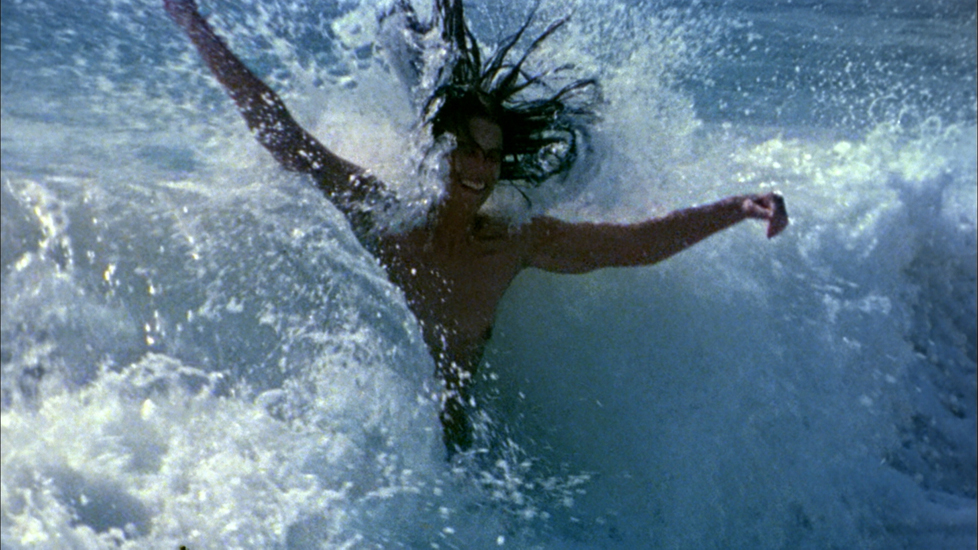Date: Wed 10 October 2012
Time: 2 -4pm
Place: usual
Frances Hubbard //
Research student in Film Studies, University of Sussex //
Associate Tutor, Media & Film, University of Sussex //
Movement and the body in Avant-Garde Feminist Film Dance
I am interested in screendance that connects with viewers’ emotional bodies as well as their heads, so a more holistic approach in which the mind can be physical and the body thinks.
Feminist theory of the 1970s/80s drew heavily upon semiotics and psychoanalysis, with the notion of the body not so much as a material entity but as a WRITTEN AND SPOKEN SIGN.
This work was urgently necessary, aiming to restore subjectivity to women through recognising our status of objects of the look, and our long association with emotion and pure, mindless bodiliness.
Whilst this strategic erasure of the body was undoubtedly necessary, it created a new imbalance – relegating the sensual and bodily aspects of female subjectivity practically irrelevant. There is, after all, a difference between the fetishized body and the lived body.
However, it is not my desire or intention to ahistorically negate this important work, because for one, it has always excited and interested me, and two, I know that I am only able to return to the sensual and bodily aspects of female subjectivity because of this work done by the generation of women before me.
So in my chapter on feminist avant-garde dance film, (although none of these filmmakers particularly think of themselves as ‘feminist’ or any –ist), I am looking at four filmmakers who came to film from a background in dance, and are also roughly from the same generation except for Maya Deren who might be considered the “mother” not only of avant-garde film, but of screen dance as well. Thus they have similar ideas and common ground, but differ in their approach to filmmaking.
I see Maya Deren and Amy Greenfield as more connected in their focus on a cinema of the body, and of the imagination, ritual, dance, and magic, and in the feeling that I get when watching of a letting go of some kind of control and allowing for sensual pleasures. It isn’t that their work isn’t intellectual, far from it, but it is that their work isn’t driven by theory but by practice. I believe that their work especially Greenfield’s, is grounded in the body, in their material thinking rather than their conceptual thinking – which takes place after the film has been made. They create worlds that are not governed by laws of time and space, but are worlds of imagination and possibility.
Where as Yvonne Rainer encourages her audience to reflect more thoughtfully than bodily, using film to dissect, rather than indulge in, emotions and affect. Both the dance and avant-garde/experimental film worlds of the 1970s worked towards deconstructing language rather than making meaning – influenced as they were by a poststructuralist distrust of language. Therefore, Rainer’s is a cinema of ideas, exploring emotion but not through emotion or its affective dimension, so whilst it feels more controlled to me, there is also a great sense of reflexive humour in her work.
Sally Potter comes from a similar background to Rainer, with her early films using fragmented and distancing narratives/devices. However, I see in the development of her work an attempt to bridge the difference between a cinema of the body and a cinema of ideas, particularly evident in The Tango Lesson (1997). This film allows for sensual pleasures – attempting to bring together the intellect and the embodied senses without resorting to the patriarchal pleasures associated with classical Hollywood narratives. But how successful is this?
Overall, then, I am intrigued by the dance connection between these filmmakers, and how this shared background informs their rhythmic creativity in, understanding of, and unique approach to film. The connection of dance and thus the sensuous body indicates a kind of female subjectivity that does not regard the body as merely a linguistic or symbolic sign, but the way that their films express this is very different and thus elicits very different reactions. So considering the words of Jennifer Barker that are central to my theses:
‘When viewers and films share certain attitudes, tasks, or situations, they will move in similar ways’ (2009: 77).
I want to explore how the chosen films of these women move me in a similar way to them? What do they teach me? And if I am learning through the body, how am I learning?
This is a work in progress, so I haven’t got the answers to my questions yet. This presentation was about formulating my ideas through showing clips of my chosen texts; Meshes of the Afternoon (1943-59) and At Land (1944) by Maya Deren; Lives of Performers (1972) by Yvonne Rainer; Element (1973), Tides (1982), and Wildfire (2002) by Amy Greenfield; and The Tango Lesson (1997) by Sally Potter.
+ attendees: AW, AD, CG, FH, CC, TA, JG, EF, NH, KG
+ invitees: SJN, CB
+ apologies: IG, KG, KW, PMC




